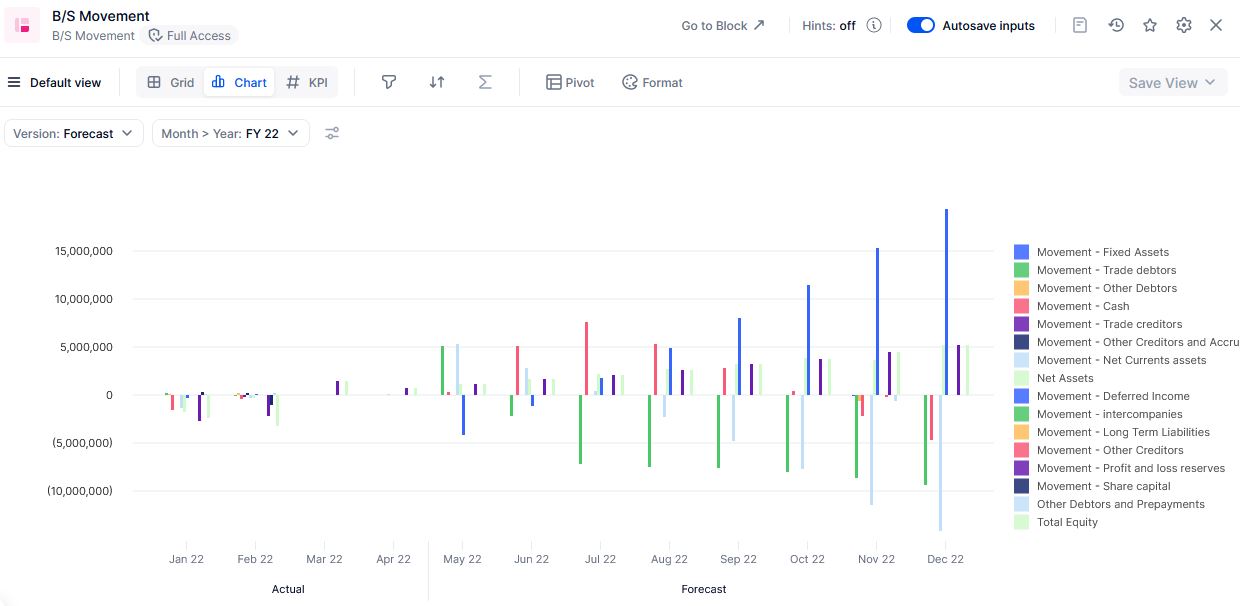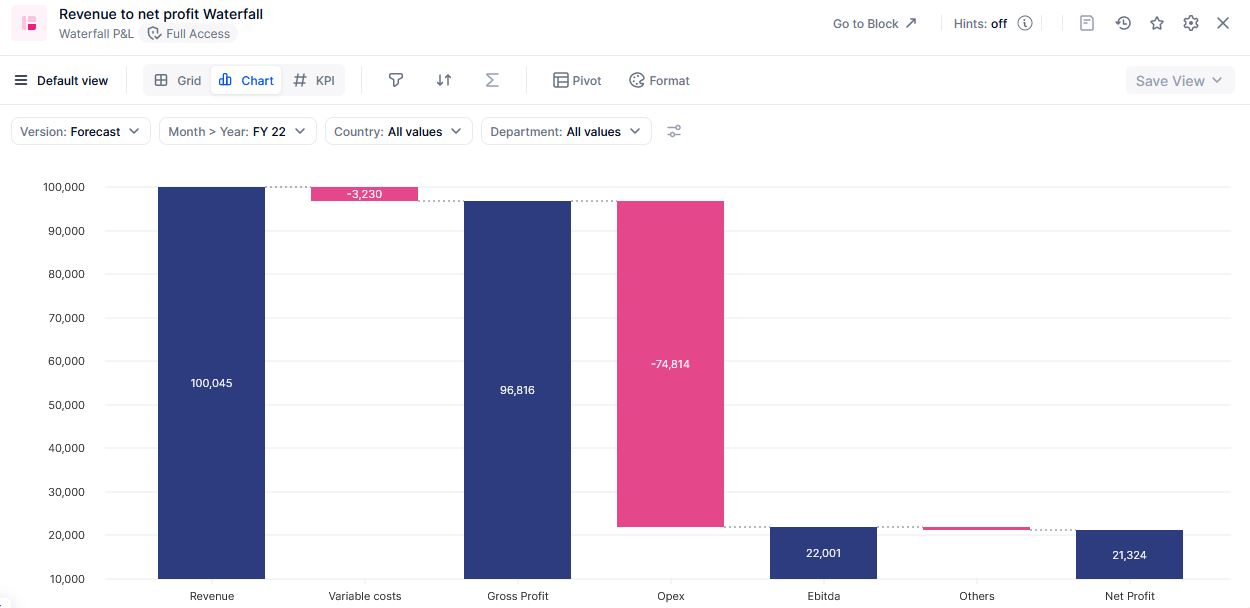Having a finger on the pulse of the financial health of an organization enables business leaders to make informed decisions.
To stay one step ahead of the competition, leadership must have a firm grasp on the financial statements that offer important details related to revenue and expenses. This is possible only through the crucial operational process known as financial reporting, which utilizes essential data for insights into the company's financial performance over a period.
What is Financial Reporting?
Financial reporting is the process of recording and analyzing financial transactions undertaken by a company over a specified time.
Organizations leverage the in-depth insights offered through financial reporting to provide important details related to the financial health of the company to key stakeholders like investors and shareholders. Financial reporting tracks and monitors important financial KPIs to paint an accurate picture related to the overall health of the entity.
This process helps decision makers track metrics like cash flow, profitability, assets and liabilities, and shareholder equity. Important financial statements monitored under financial reporting include cash flow statements, income statements, and balance sheets. When it comes to strategic decision-making, financial reporting is an indispensable part of the process.
What is the main objective of financial reporting?
The main rationale behind financial reporting is to offer detailed information to key stakeholders related to the company's financial health for accurate forecasting. Some of the other key objectives of financial reporting are:
- Analyze financial health: The foremost objective of financial reporting is to offer internal and external stakeholders useful insights into the company's financial health. This information is then used for strategic decision-making at various levels.
- Determine future strategy: Leadership teams leverage the details offered by financial reporting to chart the future course of action to maximize profits and minimize expenses.
- Statutory compliances: Financial reporting enables the decision makers to monitor statutory and regulatory compliances such as the Generally Accepted Accounting Principles (GAAP) and International Financial Reporting Standards (IFRS).
- Cash Flow optimization: Cash flow is one of the most important KPIs related to the company's financial well-being. Through financial reporting, the organization can monitor its cash inflows and outflows efficiently to determine the areas with scope for improvement.
- Transparency: One of the most important objectives of financial reporting is to usher in much-needed transparency in the company's decision-making process.
How do companies benefit from financial reporting?
Financial reporting is regarded among an organization's most important operational activities as it helps key stakeholders in multiple ways. Some of the standout benefits that financial reporting offers are listed here.
Cash Flow Management
More than 80% of small businesses have failed due to cash flow issues, and the same challenge looms over the longevity of medium and large-sized businesses. Management must monitor the cash flow closely to counter this threat to the business's solvency.
Financial reporting offers detailed information related to the business's present revenue streams and liabilities. This process prepares the business to be better prepared against unforeseen events and ensures adequate capital efficiency to make the most of available opportunities.
Better Debt Management
Seamless access to debt-related data is an essential aspect of debt management for every business. This allows leadership to manage the debt efficiently by accurately analyzing assets to liabilities ratios. Financial management facilitates debt management to maintain short-term liquidity and long-term debt management. As such, leadership can ensure the best returns on every dollar spent towards repayment of debts.
Keep Stakeholders Informed
Financial management allows the organization to maintain a firm grip on the company's financial health. It enables important stakeholders like investors, department managers, executives, and customers to stay updated with financial developments related to the organization. Hence, they are empowered to draw useful insights to facilitate informed decision-making.
Better Financial Analysis
Leadership teams and executives have ready access to past and present data related to the company's financial performance through financial reporting. Through these analyses, it is possible to prepare informed models, make accurate forecasts, and create detailed reports to facilitate informed decision-making. Moreover, real-time financial information empowers the company to capitalize on growth opportunities that might otherwise go to the competitors.
Managing Risk Exposure
Managing risk is quintessential to ensuring the company's sound financial health and ushering in process optimization reforms. Financial reporting helps leadership with detailed analysis related to the business's risks, encouraging timely decisions to counter such threats. Addressing delays and inefficiencies in financial processes help avert serious crises. Data security and expense management measures thus taken also help reduce the business's risks and uncertainties.
Types of Financial Reports
When it comes to financial reporting, it is equally vital to appreciate the importance of financial reports. There are four extremely significant financial reports that offer valuable insights into the balance sheet, cash flow statement, income statement, and statement of shareholder's equity.
Balance Sheet
It is a summarized version of an organization's net worth at a given time. A balance sheet includes details like current assets, fixed assets, current liabilities, capital accounts, equity, and others. It is possible to assess the cash impact on business operations which empowers leadership to execute robust balance sheet forecasting. This facilitates efficient long-term planning around cash spending and real-time decision-making to achieve the company's goals.

Income Statement
The income statement, also known as the profit and loss (P&L) statement, offers a summarized version of the expenses and revenue for a given period. This statement helps determine if the company can generate revenue profitably on an ongoing basis, thereby answering queries related to bottom line and top-line growth. Management can ascertain opportunities for improvement in the sales funnel with the data available through income statements.

Cash Flow Statement
The cash flow statement helps determine the company's efficiency in generating cash over a period to honor its debt obligations, finance operating expenses, and make investments in fixed assets. This data is of supreme importance to investors as they are keen to determine the company's approach to saving and spending money. The cash flow statement enables leadership to acquire deeper insights into the cash movement in and out of the company. Thus, leadership is better prepared to determine the organization's future path.

Statement of Changes in Equity
This statement records any company equity changes and how much money the company would be left with after making payments to equity holders and owners. This statement assumes greater importance if the company offers equity to employees or investors.
Practical examples of financial reporting
Financial reporting is a crucial process undertaken by all companies, irrespective of their size or nature of operations. One of the important tasks under financial reporting is the analysis of the financial statements to derive meaningful insights to drive future growth for the business.
In the past, it was more common for companies to prepare financial statements manually, but this approach was time-consuming and unnecessarily complicated. Take a look at the example:
ABC Tech Solutions is a rapidly growing SaaS company that has witnessed incredible growth over the last few months. To support its growth ambitions, the company has hired several new employees to boost revenue further and serve customers better.
At a certain point, the pace of their growth outgrew their existing financial recording and reporting tasks hosted on spreadsheets.
Unsurprisingly, errors creeped up into reports as huge volumes of data were being received from multiple sources. Simply put, they had outgrown the functionality of spreadsheets.
Moreover, the requirements of leadership and departmental heads related to financial data evolved quickly. They had to quickly process huge volumes of data from various sources to prepare self-serve financial statements and reports for different departments. These detailed reports were also required to raise more funds to fuel further growth.
Finally, they opted for an integrated financial planning and reporting platform. This timely decision completely revolutionized the financial reporting processes at ABC Tech Solutions. In-depth reports, actionable insights, automated data imports, and incredible presentations gave the decision maker and stakeholders at ABC Tech Solutions the details required to make more confident decisions.
In our hypothetical example, here are some of core financial reporting functions our fictional company could have carried out with ease after implementing a business planning platform:
Preparing an income statement
- Select the reporting period for the income statement
- Ascertain the total revenue generated during the period
- Calculate the cost of goods (or services) sold during the period.
- Deduct the cost of goods or services from total revenue to determine gross profit
- Calculate operating expenses incurred during the period
- Determine the total income (EBIT) by deducting operating expenses from gross profit
- Finally, deduct interest and taxes from EBIT to calculate the net income
Preparing a cash flow statement
- Calculate the opening cash balance (including cash, bank balance, or other cash equivalents)
- Determine the cash flow from operating activities
- Calculate the cash flow from investments
- Ascertain the cash flow from financing activities
- Add the above three cash flows to analyze the closing cash balance for the period
- A negative cash flow indicates higher expenses and lower revenues, while a positive cash flow indicates higher revenues and lower expenses
Preparing a balance sheet
- Ascertain the balance sheet's date and reporting period
- Categorize the assets into current assets and noncurrent assets
- Categorize the liabilities into current liabilities and noncurrent liabilities
- Calculate the shareholders' equity
- Add total liabilities to shareholder's equity and compare it with total assets
What are some key financial modeling and reporting skills?
Financial modeling and reporting are extremely vital tasks for any organization. Hence, professionals handling these duties must possess the key financial modeling and reporting skills mentioned here.
- In-depth knowledge of accounting principles
- Fluency in working with spreadsheets
- Understanding of how to link the three core financial reports
- Experience working with complex data models
- Ability to extract key information related to data sourced from multiple sources
- Ability to create a logical framework for accurate forecasting
Financial reporting can only be efficiently completed in the modern-day complex business environment through a comprehensive financial modeling and reporting tool. This is where Pigment stands apart from other players in the market.
A modern interface, faster data processing, and error-free operations make Pigment the go-to platform for all your financial reporting requirements.
Bring faster and more accurate financial reporting to your company through Pigment: book a demo today.
.svg)

.svg)



.webp)
.jpeg)
.webp)
.webp)

.webp)
